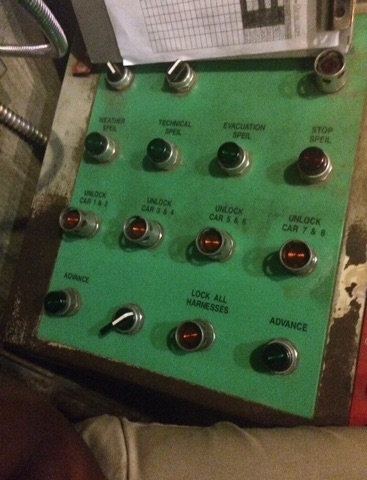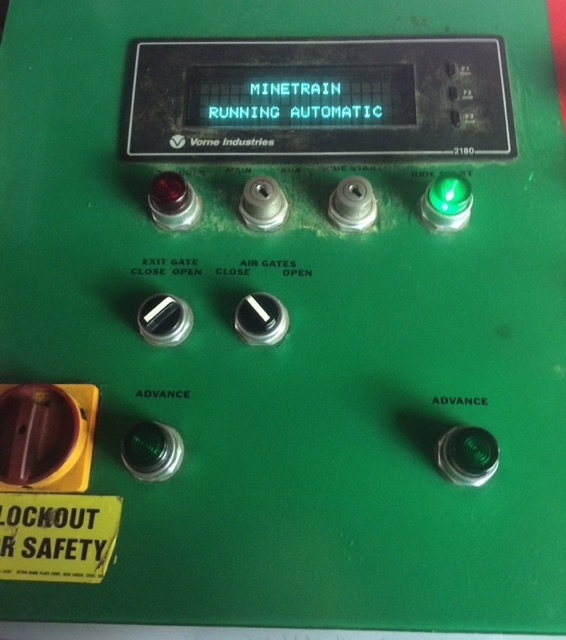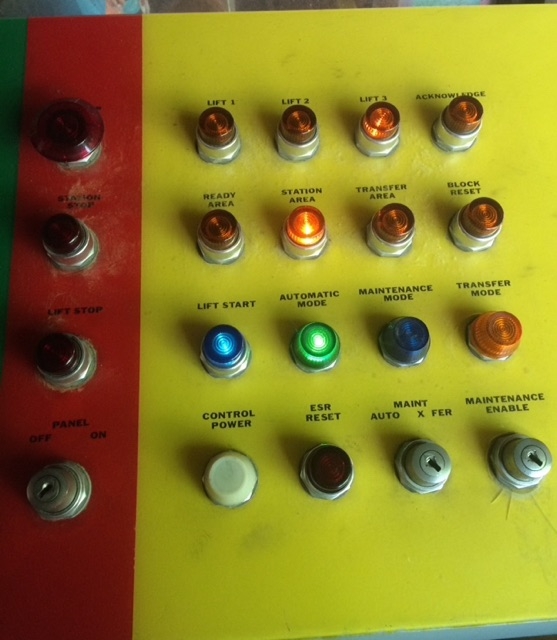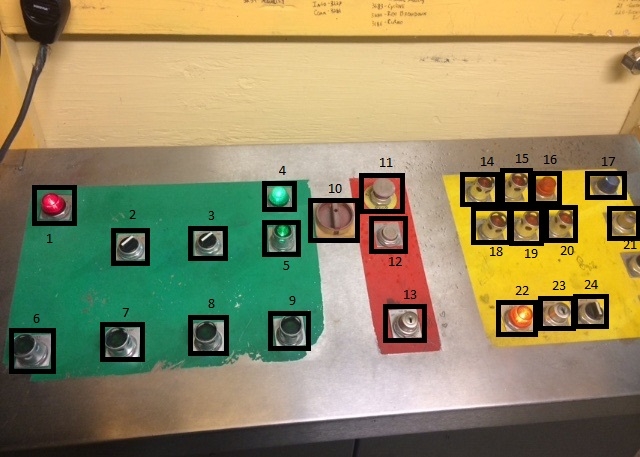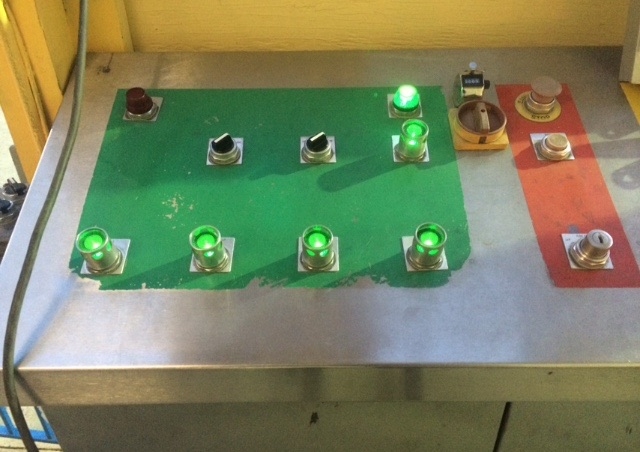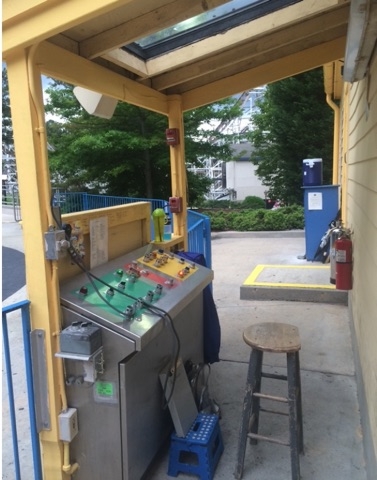
Malanzz
Members-
Posts
10 -
Joined
-
Last visited
Everything posted by Malanzz
-
Summer Job at a park (SFA)
Malanzz replied to Password121's topic in Theme Parks, Roller Coasters, & Donkeys!
I'll add my input to this as well. Like a lot of the others said in similar words, it's a very different world going from being a guest at the park to being an employee of the park. To also reiterate, going from a "fanboy" perspective to an employee perspective can be really tough. Its not always fun and games. 1) If you are determined then 40 minutes is doable, I lived an hour and 30 minutes from Six Flags Over Georgia and drove it every day to work and back home. I actually lived in a separate state than Georgia. I lived in Alabama while working in Georgia. You may not make a ton of money, but if that not the concern then its not the bad part. I made just enough money for gas and food. I literally saved no money nor had discretionary income to spend on myself, but with that being said, it was not about money for me, it was about experience and beginning to build my career and build relationships in the industry. 2) Pick a department you have a true passion about. Ride/Park Operations are my areas of passion. Its what I am working to build a career in and automatically what I knew I wanted to do when I worked in my first park. Keep in mind that rides departments are very very cut throat. Like someone else said, amusement parks are about the rides. Nobody comes to the parks to eat the food or just play the games. It's about the rides. You WILL be under intense scrutiny from all levels of management from leads to direct supervisors, and all the way up to the GM making sure you are on point each day. Building on that, it can be very difficult to move up in the rides department. I was promoted to lead shortly after opening day of my second season at SFOG, but I fought very very VERY hard for that lead spot and had guidance from a supervisor. If you want to move up, you will be competing to prove yourself against at least one if not multiple in-charge team members from very likely each ride in the park. In my case, the first round of promotions came along and someone else was chosen for the lead spot at my ride although I knew the ride forwards and backwards and could operate it in my sleep. If you move up, the scrutiny will get even more intense. Things your team members do can fall back on you. It's very rewarding but can be very hectic and stressful. 3) If its like SFOG, you can expect to work from 45 minutes prior to your location in the park opening until sometimes up to an hour or more after closing. This can constitute for very long days. We once had an area Lead and In-charge meeting that lasted until 11pm. The park closed at 9 that night. I can count on two hands if not one the times that I worked an actual shift and not from before open to after close. Paired with that, you can expect a wide range of weather, from rain which can leave you soaking wet, to heat which will have you wanting nothing more than to go inside. 4) Guests are definitely not always easy to get along with. Everyone on this site would be easy to deal with because they all know the ins and outs of rides, know whats okay and whats not, and in addition know if someone tells them rules that its for a good reason. Not everyone is like the good ole folks on this site though. They wont understand, they will argue, they will cuss you out, and you will hate it. I once had a train held up in a station for 15 minutes (with a loaded train behind it just waiting) because a lady refused to take her bag off which was not allowed on the ride. In those situations you have to be prepared to stand up to guests politely, but sternly explain the rules and not get your behind handed to you by a guest and not get yourself in trouble because you didnt enforce rules. Supervisors are not always readily available to help with these kinds of situations. 5) You don't have to have prior experience to work in the rides department. You will be trained for your position/location. On the other hand, if you want to move up, you will have to earn experience within the property. You will first have to hold an in-charge team member position and be an assistant to a lead. If you want to move up, the work you do while you are an in-charge will be extremely picked apart and looked at each moment of every day. 6) In my opinion, leads have it best, followed by in-charges, with regular team members being on the bottom of the totem pole. Yes, leads are scrutinized for their work, but they have it easy in some aspects. Leads are more often than not main panel operators. They are the employees that get to sit down, that don't have to check restraints, that have a place in the shade, etc. If a lead isnt there its an in-charge job. Regular team members dont have this luxury often, if at all. You will be doing all the grunt work while often times you will see a lead or in-charge looking comfortable sitting down and operating. But hey, thats all the more reason to work hard and get promoted! Please, if you have a passion for this industry, don't let anything any of us say turn you against it. You could get there and love every minute, but you have to keep in mind that being an employee and a guest are two completely different worlds. You have to keep the two separate and know what is work and what is for your own enjoyment. I say if you really want to, then go for it! If you dont like it, you can always resign, but its worth a shot! -
The Control Panel Enthusiast Thread
Malanzz replied to Montu Maniac's topic in Theme Parks, Roller Coasters, & Donkeys!
The two top switches for music and effects in the station and queue make sense. I should have known that. Ninja has the same thing I learned about when I was training for it. Yeah, the music and effects still work, so that's what they are for. -
I would have to say it's unlikely. Space in the park is extremely limited due to the interstate and the river bordering two sides of the park. As well, there is little room for expansion. Also, Hurricane Harbor is said to have more phases to be built with the first being the one that opened in 2014. Ninja would be the first to go if anything, so if a said coaster were to happen it would be in that area. As for greater than 200 feet, it would have to be in that section of the park. The only way they were able to construct a 242 foot SkyScreamer was because of the lower elevation in the back of the park. There is a regional airport just down the interstate that restricts height at SFOG to 200 feet or less at the equivalent of their highest elevation. They can build greater than 200, but it had to be placed at a lower elevation and not be greater than 200 feet would be at the parks highest point. I hope that makes sense.
-
The Control Panel Enthusiast Thread
Malanzz replied to Montu Maniac's topic in Theme Parks, Roller Coasters, & Donkeys!
Here are two I found a while ago from Sky Mountain at JinJiang Action Park. I take no credit for these pictures because they aren't mine! I'm not sure where I found them, very well could be somewhere on this site. If they belong to any of you guys, please let me know and credit will be given/photos taken down! Sky Mountain Maintenance Sector Sky Mountain Operator Sector -
The Control Panel Enthusiast Thread
Malanzz replied to Montu Maniac's topic in Theme Parks, Roller Coasters, & Donkeys!
Does anyone know what the different 4 colored sections of the Loch Ness buttons buttons mean (green, yellow, red, and black from what I can see)? Do these sections light up at different times corresponding to available functions of the button at that time (sort of like the solid and different speed blinking patterns on rides at Six Flags Over Georgia). Is it 4 different buttons in one or just one sectioned off into different colors? Sorry for so many questions, I have just seen those before, and haven't ever figured it out. -
The Control Panel Enthusiast Thread
Malanzz replied to Montu Maniac's topic in Theme Parks, Roller Coasters, & Donkeys!
Next, I'm going to do Dahlonega Mine Train and Batman together. Most of these buttons have labels and are self explanatory. In the first picture is the operators side of the Batman panel, minus the red sector which includes e-stop, ride/station stop, lift stop, and control panel power enable (key switch). All of these buttons are self explanatory. I never actually operated Batman, I took this pic when I went back after I left for the season and was talking to one of my good friend that was the lead of Batman. For that reason, I dont know what the two switches at the top do, I assume one may be entrance gates, and possible exit gates, but I feel like the exit gate switch is at the bottom of the panel. I do know that the red button in the top right corner of the green section is the trouble light/button. It is a button, due to the fact that when a RMC occurs, it will light up as well as an alarm will sound. Depressing the button silences the alarm, and trust me, you want to be able to silence them as they are high pitched shrill beeps. The first Mine Train panel picture is the operator side. All buttons self explanatory except maybe the top four under the read-out screen (which by the way, tells the status of the ride, or if an RMC occurs reads out the problem that has occured. From Left to right, we have the trouble button, same function as previously stated in batman, next is the key switch from main to auxiliary panel, third is the key switch that must be turned to start the ride (separate from starting the lifts), and last is ride start which is used in conjunction with the preceeding switch as well as lift start. On Mine Train, operators do have access to a key, this key allows the switch from main to aux panel if staffing has fallen below minimum, and it also works on the ride start switch. In order to start the ride, the key must be inserted, turned and the ride start button must be depressed. In the final picture is the emergency buttons as well as maintenance buttons. All emergency buttons are self explanatory. Station stop means the same things as ride stop. It closes all ride brakes and stops the lifts. Lift stop simply cuts power to all lifts (there are three on Mine Train). Operators have the ability to reset these two buttons as opposed to e-stop who only maintenance can reset. On the yellow portion of the panel are the maintenance buttons. the first two rows are block section indicators and then the block reset button. When they are off the block is unoccupied, when they are on solid the block is occupied (Lift 3 and the station were occupied in this picture), when they are blinking, there is a train approaching the block. In maintenance mode, in order to reset a block after an ESR or block discrepancy, the mechanic must depress the block reset button then the corresponding block. Operators have access to the blue lift start button. Solid when lifts are on, blinking when lifts are ready to be started. Pressed in conjunction with ride start (after ride start and key switch have been used) to start the lifts. Key switch beside ESR reset has three modes (auto, maintnance, and transfer). In addition to the main panel, there are various other panels on mine train. actually there are 7 panels total if I'm not mistaken. The main panel, the aux panel (station stop, lift stop, e-stop, exit gates, entrance gates, and one dispatch button), verifiers panel (dispatch enable and e-stop), lift 1 panel used to start lifts with main operator (ride stop, lift start, lift 1 clear-maintenance, lift 1 stop, lift 2 stop, and lift 3 stop. Lift 2 and 2 panels (maintenance access only, lift stop and lift clear), then there is the transfer shed panel (transfer mode selector, transfer mode indicator, e-stop, release station brake button, move track 1 to run button, move track 2 to run button, track locked indicator, release brake on track 1 button, and release brake on track 2 button). Please if you have questions or whatnot, ask away! I love talking about this stuff! Sorry if this description was a bit more vague than the Acro one, I figured this was more self explanatory due to labels being visible as well as having described many functions already. Enjoy! Batman Operator Enabled Buttons Mine Train Operator Buttons Mine Train Emergency Buttons & Maintenance Buttons -
The Control Panel Enthusiast Thread
Malanzz replied to Montu Maniac's topic in Theme Parks, Roller Coasters, & Donkeys!
Alright guys and gals, I apologize in advance for multiple lengthy posts. I have pictures of 5 Six Flags Over Georgia Panels (main panels). I'm going to split up the pics cause I'm going to detail all the button/switch functions! Ill do Acrophobia, Scorcher, Cyclone and Batman, then Dahlonega Mine Train. Sorry in advance for some of the weird angles, I try to be artistic sometimes and forget that I'm on the path to a career in park/ride operations, not as an artist/photographer Please, forgive me for any vague descriptions or whatnot, I'm doing this from memory of all the panels. Yes, memory, I've always been a bit obsessive, and memorized nearly every button and switch, even maintenance restricted. First up we have Acrophobia. Of course, as you all know, its an Intamin 3rd generation gyro-drop. 200 ft tall tower, 161 ft (ride height) aka drop height at 62 mph lasting a total of 45 seconds from dispatch to "parking." For the last picture, in regards to the numbered buttons: 1) Trouble Light-Serves to alert operators when a RMC in the rides operation occurs (RMC-Ride Maintenance Code). Of course, when this lights up, the ride will shut itself off and stop at the nearest stopping point, or if not in cycle, dispatch will be disabled. 2) Exit Gate Selector-Switch that allows opening and closing of the exit gates 3) Entrance Gate Selector-Switch that allows opening and closing of the entrance gates 4) Auto Mode Indicator-Green light that is illuminated when the ride operation system is in automatic mode. This light has three modes; solid when the rides automatic mode has been initiated (button 5), slow blinking when the ride is in auto mode but has not been initiated yet, then last fast blinking when the ride is in auto mode AND the maintenance cycle mode is on. It is worth noting that In order for an operator to have control, the maintenance cycle key switch must be off. Operators only have control in solid and slow blink mode. 5) Ride start-Green lighted button that initiates auto mode. Solid when auto key switch is in the on position, maintenance cycle off, and button has been depressed to initiate auto mode. Numerous conditions must be met (by the ride computer itself) for the button to be active. 6) Dispatch Side 1-Green lighted button that when depressed in conjunction with button 9, as well as both verifier dispatch buttons. Solid once ride has dispatched, slowly blinking when ride cycle has finished, and fast blinking when the corresponding verifier dispatch button has been depressed, signaling to the operator that that verifier is ready and area is clear. 7) Shoulder Harness Release 1-Green lighted button that releases harnesses for seats 1-15. Solid when depressed and harnesses unlocked, slowly blinking when harnesses are able to be released, and off when ride has been dispatched (disabled). 8) Shoulder Harness Release 2-Same as button 7 except for seats 16-30. 9) Dispatch (Cycle Start) Side 2-Same as button 6 except for verifier 2. 10) Lock Out Tag Out-Used to cease all power to the ride in the event of unloading during a breakdown or for maintenance. 11) Emergency Stop-Self explanatory, when depressed stops the ride immediately regardless of where the unit is located on the tower 12) Ride Stop-When depressed stops the ride in the nearest stopping point (top or bottom of tower), also a way to cease automatic mode when unit is at the bottom of the tower parked. 13) Control Power Enable-Key Switch that has three settings (on, off, reset). Enables power to be provided to the main control panel, or if an e-stop has been initiated it can be switched to the reset position and used along with the ESR Relay to reset an e-stop and resupply power to control panel. 14) Lift Jog Up-Yellow lighted button that allows maintenance to manually raise the catch or the catch and unit. Solid when unit/catch are being raised, slowly blinking when not in use but enabled 15) Drop Release-Yellow lighted button that when pressed, released the drop mechanism and allows the unit to be dropped manually. Solid when release is in progress, slow blinking when release is open or closed and standing by. 16) Brake Test Mode Lamp-Yellow light that signifies the brake test mode is active. Solid when keyswitch allowing BTM to take place is in the on position (this keyswitch is located on the rides switchboard, not the panel). Slowly blinking when brake test is standing by to be performed, fast blinking when brake test is being performed. 17) Maintenance Mode Indicator-Blue illuminated light that signifies maintenance mode is enabled. Solid when maintenance mode is on, slowly blinking when selector switch is in maint position but ESR (emergency stop relay) is not energized, and fast blinking when selector switch is in maint position and ESR is energized as well as the maintenance panel is connected. 18) Lift Jog Down-opposite of button 14-Allows catch/catch and unit to be lowered manually 19) Turning Platform-Lighted yellow button that when depressed manually rotates the ride unit. When depressed, the ride control system will automatically stop the unit back at its home position. 20) Shoulder Bar Test-yellow lighted button that when pressed signals for the computer to unlock all harnesses for a certain period of time. Solid when harnesses are unlocked, slowly blinking when test is in standby waiting to be performed. 21) Mode Key Selector-Key switch that allows selection of auto or maintenance mode 22) Ride On-Orange light that indicates that power to the ride has been turned on and ride is energized. Solid when key switch is on and ESR is on, slowly blinking when control power key switch is on and ESR is off but NOT ready to be switched on, fast blinking when control power enable is on and ESR is ready to be switched on 23) Synchron-Key switch with three positions. L position means only motor one (master motor) is active and only one side of cables will move. R position means motor two (slave motor) is active and does the same for other sides cables. Synch position means that both motors are active and in operation. There are tedious technicalities that apply before a motor can be disabled and only one motor active. 24)Vehicle cylinders-Manually operates rides hydraulic system. Allows dampers to be moved up and down on command. Three positions, one for up, one for down, and the 0 position used for automatic mode where the computer controls the dampers. Two buttons that are not labeled (not quite in picture) 25)-(under button 21)-Maintenance Cycle Start is a key switch that when switched to on allows the ride to be dispatched using only the main control panel, thus not needing verifiers. This cycle type deactivates after two cycles automatically. One main use is to park the ride at night (catch at top of tower, unit at bottom with dampers lowered, gates closed, harnesses closed, and seats tilted in) 26)-(under button 25)-Tilt Switch-allows the pods of seats to be manually tilted in and out. Verifier Panels (two total) (not pictured) 1) Emergency stop 2) Dispatch enable-same blinking patterns used as main panel With the verifier panels and operator panels, upon dispatch, the operator has 8 seconds to depress the two dispatch buttons on the main panel after verification of dispatch buttons have been depressed, if this does not take place, dispatch will be disabled and will require all buttons be released and dispatch sequence started over. Maintenance has a wireless remote style controller that interfaces with the rides computer and allows specific operation and functions to be performed away from the panel. Whew, I'm out of breath now! Acrophobia Main Panel Acrophobia Labels Operator Enabled Elements Acrophobia Main Control Booth -
At maximum staffing, the unloader handled exit traffic. At maximum my normal responsibilities were operating, paperwork, guest comments/concerns/questions, spieling, managing crew, etc. Who knows, I understand no main panel because of the booth with minimum, but minimum plus or max staffing, it remains a mystery. Y'all do give me some thoughtful insights though. All of the rides at SFOG require a key, but only maintenance has access to them, nothing out of the ordinary. Just to turn on/off the panel/power. On cyclones panel (main and auxiliary, there were ride stop and lift stop, which respectively, turned off the lift as well as closed the brakes, or just turned off the lift. As far as starting the ride. The main panel has lift start and ride start, as well as a lift start button on the lift panel. To start the ride, you don't have to do a ride start and lift start, they are simultaneous. The ride start and lift start buttons are depressed together and then the lift start button on the lift, and the horn sounds. After the horn stops, the brakes release and the lift chain starts. Same process generally on all of the coasters at the park (a few exceptions....Goliath, due to the grade of the lift and height, it requires a supervisor being tethered to scale the lift therefore only requires the main panel to restart the lift). Some of the flats have different processes, for example Acrophobia, I had access to ride start and ride stop, but ride start only worked in the event that maintenance had put the ride in automatic and didn't "start" automatic mode. Then I would just depress ride start and it would be ready to dispatch. In contrast though, if I were to depress ride stop on Acrophobia, I didn't have the power to restart the ride, it required maintenance coming to clear the ride stop and place the operation mode back into automatic. So it was somewhat similar to e-stop, just less abrupt. Sorry for going on a tangent on a simple question I have a few pics of different panels around the park I'm going to post in the control panel thread and then detail what the buttons and switches do! So check that soon if you're interested!
-
^The thing is, the main panel never has an operator at it, even if I did have a full staff. It was maintenance that used it or me to start/restart the coaster. It just never made sense. My minimum was 3 (me as the op, a verifier, and a downstairs attendant) and during peak days and hours we had at least 4 (same as previous plus an unloader). While it was 3 I checked one side of restraints and the verifier the other side, so with only 3 attendants I understand having the operator use the auxiliary, it wasn't in the booth (three stairs up and enclosed) and it was more convenient and safely located (right beside the track at the back side of the station. If we were staffed above 3, I never had to leave my aux panel yet was still never allowed to use the main panel. I mean it, as well as the booth looks a little rough, but its an older coaster, its expected. It also probably wouldn't have been fair for me to have an enclosed booth with a seriously awesome A/C unit inside of it while my attendants were burning up . Regardless, it wasn't my favorite coaster to operate anyways. I absolutely loved operating Scorcher though! So many buttons!! Georgia Cyclone Main Panel
-
Hey everyone, I haven't posted in a while, I suppose in years, and since then forgot my original username/password. Just a little insight from someone who used to be within the park, I was the summer Lead at Cyclone last season so I definitely spent my share of time at the ride. Cyclone has been retracked to a certain extent, not near as much as is desirable though, the first drop and second drop have been, after that, its back to pre-RMC track, which isn't getting any smoother anytime soon. That being said though, according to supervisors, managerial and sectional, Cyclone wont be going anywhere. Whether or not it will continue to be retracked is another story, we never talked about that. Just about the possibility of its removal. I feel like if they were going to continue retracking it though, they would have done so though. Since then, they have added Hurricane Harbor, and now they are adding Joker's Coaster and Harley Quinn Spinsanity....you would think if they were going to continue the retracking they would have done so before initiating those projects. In all reality, Cyclone needs a large refurb, it has the potential to be a great coaster, but let's face it, right now it just plain hurts to ride it. Complete retrack, new paint, refurbed trains would be fantastic (ones that don't require some seats use a manual unlock "stinger" every time it comes into the station), new landscaping around the base of the ride (you wouldn't believe how disgusting it is down there), a louder PA system would work wonders, and from an operators perspective, somewhat remodeling the station to expose the main control panel and do away with the annoying auxiliary panel. I was never informed, nor did I ever understand why we couldn't use the main panel, so if someone is aware, please enlighten me. It works just fine because I operated the coaster from it a few times and in addition, that's where I started the ride and the lift at the beginning of the day, or after weather, or after a breakdown. Also, with the aux panel, I was never able to see if the trouble light had come on if the ride stopped. It was pretty much operating the coaster from two different panels, which got a bit tedious at times, and lets face it, everyone likes a main panel better!


